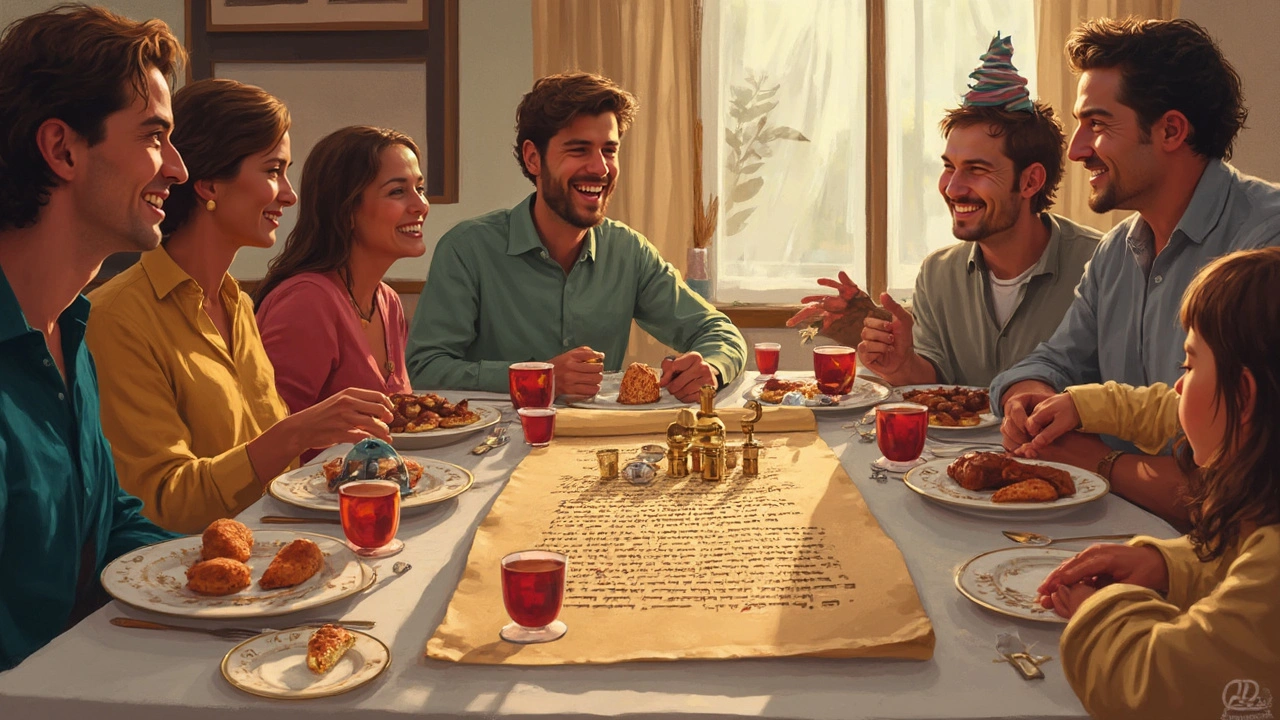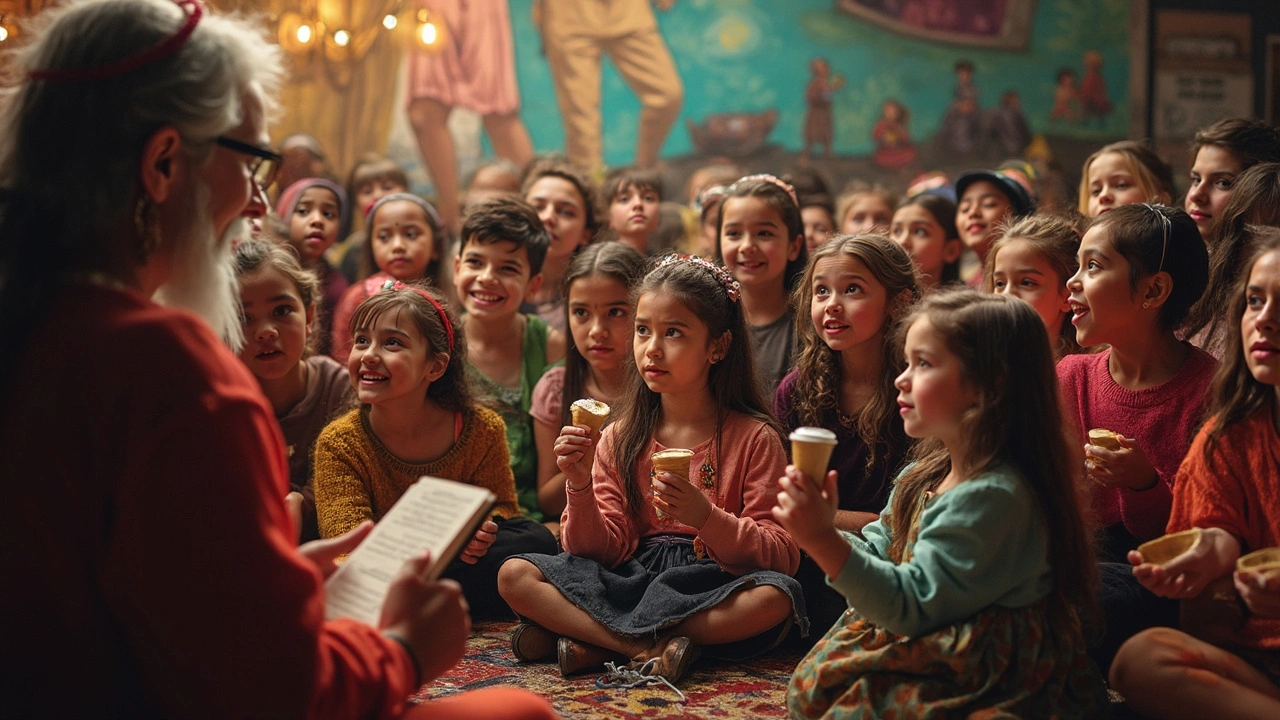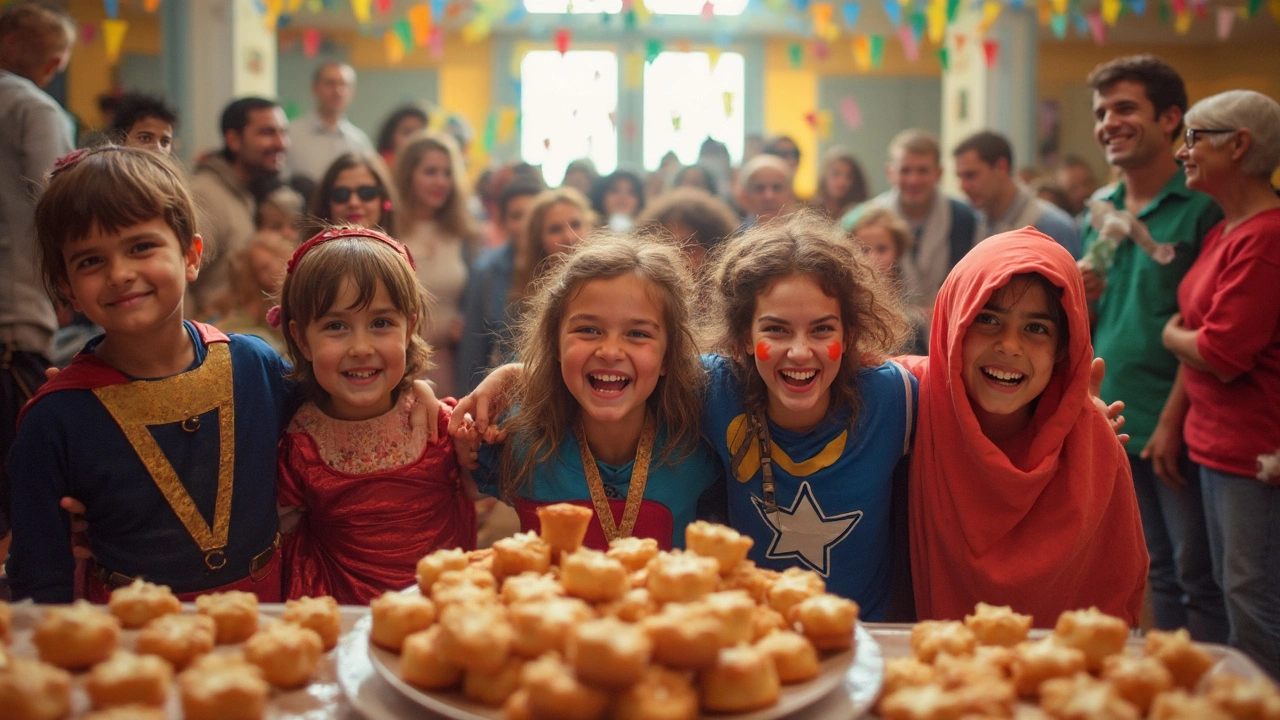Grownups leap into costume parties, kids run wild in sparkly superhero capes, and the smell of fresh-baked hamantaschen drifts through kitchens. Purim is one part ancient survival story, one part joy-fueled blowout—a Jewish holiday everyone in the community waits for and, honestly, dreads ending. But what makes Purim so magnetic? It’s not just candy baskets and silly masks. This is a celebration built on centuries of storytelling, clever reinventions, and tiny, brilliant acts of kindness that keep people coming back for more.
Ancient Origins: How the Story of Purim Came to Life
Imagine living under a king who barely remembers your name, in a palace where danger wears silk and smiles. That’s the backdrop for the Book of Esther, the megillah at the heart of Purim. The story is almost cinematic: King Ahasuerus rules over 127 provinces; his advisor Haman plots to wipe out the Jews over a bruised ego; Esther, the queen hiding her heritage, risks it all to save her people; and Mordechai, her cousin, stands steadfast against power run amok. Scholars put these events in ancient Persia, most likely during the reign of Xerxes I, somewhere around the 5th century BCE. The stakes couldn’t be higher, but the celebration that comes after? Joy explodes out of sorrow.
If you ever wondered why Purim parties are so wild, think of it like the collective sigh of relief after a close call. Even the rituals reflect this relief. People read the megillah aloud—every time Haman’s name is mentioned, kids (and grownups) shake noisemakers called graggers to drown him out. Talk about not letting the villain steal the stage. There’s something universal about rooting for the underdog, and this holiday runs with it.
There are layers, too. Some rabbis point out Esther’s name comes from the Hebrew for "hidden"—and hiding is a theme, from her identity to the way G-d’s presence is never once mentioned directly in the story. That’s rare for a biblical tale. It sparks debate and thought every year: Where do you find courage when you can’t see your way forward? How do you trust what isn’t obvious? Purim keeps these questions alive—right alongside the makeup and the pop music.
Excavations in the ruins of Susa (Shushan), where the story takes place, turned up records that match some details in the Esther scroll. Still, historians debate its literal truth, but the power of Purim is less about facts than hope—the kind where an unlikely hero steps up and the tables turn at the last minute.
If you look closely, echoes of Purim show up in other cultures’ stories, too: the idea that fate can flip and that a twist of timing can change everything. No wonder the holiday feels bigger than one group, or one era, or even one generation.
How Purim Traditions Evolved: Masks, Mishloach Manot, and More
Modern Purim, you’ll notice, is less about royal intrigue and more about pure joy. But the roots of what people do now stretch back centuries, each tradition growing a bit and getting a playful makeover every generation. Start with costumes. Why the parade of queens, superheroes, and even dogs in banana suits? Dressing up taps into Purim’s theme of hidden identities and surprises—just like Esther concealing her roots. By the Middle Ages, Jewish communities in Italy were already outdoing each other with masks, pulled straight from the Carnival tradition. The trend stuck and rolled across Europe and, eventually, worldwide.
Then there’s mishloach manot, those edible gift baskets friends and neighbors swap. The classic kit? Cookies (hamantaschen almost always, sweet pockets filled with poppy seeds or fruit), fruit, and a drink. The only actual rules: at least two different foods, and they go to at least one person. That’s straight from the Book of Esther (9:22), which says to "send gifts of food to one another and presents to the poor." People love to get creative: homemade treats, gourmet cheeses, a splash of wine—anything easy to share. There’s even an art to how you wrap it: color-coordinated ribbons, baskets, boxes that double as toys. If you’re ambitious, try themed mishloach manot. (One family sent out only foods from the story—a "Persian palace" box with dates, nuts, and little bottles of pomegranate juice.)
Feasting is a must. The Purim seudah—a festive meal—can run from elaborate multicourse spreads to laid-back potlucks. Classic Ashkenazi foods include kreplach (meat-filled dumplings), while Sephardic tables might have sambusak or chickpea pancakes. It’s the one day in the Jewish calendar (yup, the whole year) where custom actually encourages a little tipsiness, all in the name of blurring the lines “until one cannot distinguish between ‘cursed Haman’ and ‘blessed Mordechai.’” No kidding, this means more wine than usual, but most people keep it light and focus on laughter instead.
Charity comes front and center. Purim asks everyone to give matanot la’evyonim—money or food to at least two people in need. In some communities, families sit down with their kids and choose a charity together. There’s something beautiful about teaching children that giving is as important as receiving, especially on a day centered around survival and hope.
Big cities like Jerusalem, Tel Aviv, New York, and Los Angeles turn Purim into a seriously public affair, with parades, street dances, and wild costume contests. School kids act out the Esther story in plays. Synagogues organize carnivals with bounce houses, face painting, and cotton candy stands. Adults get into fundraising masquerade balls or wine-tasting events for a good cause. Social media has made it even wilder. Purim hashtag trends showcase costumes that would stun any fashion week designer—one year, a group in Brooklyn did the entire Book of Esther as emoji characters.
Table: Purim Traditions Around the World
| Country/Region | Tradition |
|---|---|
| Israel | Public parades (Adloyada), massive street parties, and jets of confetti. |
| Morocco | Cookies with honey and almonds called "Oznei Haman" and group storytelling. |
| Italy | Masquerade balls and music adapted from Carnival. |
| Iran | Reading Esther in both Persian and Hebrew, Persian sweets on the table. |
| United States | School plays, costume contests, DIY mishloach manot drives. |

Packed With Symbolism: Why We Eat, Wear, and Laugh the Way We Do
So much of Purim seems random until you look closer. Take hamantaschen, the triangle-shaped cookies. Some say the shape is Haman’s hat; others say it’s his ears, or even his pockets ("tash" in Yiddish does mean pocket). Another idea? Triangles symbolize strength—like the three Jewish patriarchs helping protect Esther and Mordechai. No two people will agree on why (or which filling is best, though I’d sell my soul for a good apricot one). But that’s the point: every element holds more than one meaning, and that makes Purim wildly personal.
Masks and costumes do more than add flair. They let people become someone else for a day, unleashing creativity that’s dormant the rest of the year. It’s the only holiday that basically says: forget about fitting in, go wild. Some synagogues hand out silly hats to anyone who forgot their costume. There’s even a side tradition where local leaders dress absurdly (in London, the rabbi once led prayers dressed as a pirate). Basically, blending in is out. Being seen—on your own terms—is in.
The drinking “commandment” is another layered ritual. Sure, it’s fun, but it’s also about letting go of the illusion of total control. Purim happens at the tail end of winter, just before spring. It nudges people to loosen up, build community, and prep for the hope that comes with the new season. Even the reading of the megillah is interactive: listeners bring scripts, funny props, and rewrite parts into skits or songs. The story comes alive when told by many voices, not just one.
Giving gifts and charity goes back to the Purim story’s focus on unity. Haman tried to destroy an entire people because of difference. Purim flips this on its head: you connect with people you know, and people you usually overlook. Many families keep a list from year to year, making sure nobody is left out. Some years, schools and synagogues start “mishloach manot exchanges” where names are drawn so every kid gives and gets a basket, no matter their family’s budget.
If you’re superstitious, there are Purim customs for that, too. Tying a string around the megillah scroll, wearing a special ring, whispering prayers over the first cookie—all have echoes in different pockets of the Jewish world. The point is simple: Purim gives everyone, everywhere, a way to step out of regular life and remember the wild magic of survival.
How Purim is Celebrated Today: Around the Globe and Online
Jewish communities on every continent make Purim their own. In Jerusalem, crowds flood the streets for Adloyada, a city-wide costume parade that stops traffic. College campuses keep it alive with all-night Purim “megafests” blending learning and karaoke. In smaller towns, you’ll see pop-up Purim carnivals at the local JCC, complete with Purimspiels—comedy skits with handmade sets and inside jokes only that community gets.
For Jews in countries with tiny populations, Purim can be reassuring: a gathering, not a mob. In Cuba, less than 1,100 Jews make enough noise reading the megillah that it spills out into the street. In India, the Bene Israel community mixes coconut sweets with traditional Purim cookies. South Africa’s synagogues host joint meals for families who can’t celebrate at home. Everyone’s tradition connects, but the details bloom in local flavor.
The rise of digital connection has transformed the holiday. Thanks to livestreaming, you can “attend” a megillah reading in Melbourne and then join a virtual costume contest hosted by a Boston synagogue—all in one night. Social media? It’s not just for show-off costumes. Activists use #Purim to push donation drives that reach global audiences in hours. People locked down during the pandemic got creative: virtual Purim spiels, Zoom-gift exchanges, and curbside baskets. The flexibility helped expand what it means to celebrate, making Purim accessible to people who might have felt left out before.
One unique trend: Purim “flash mobs,” where groups dance through city squares in costume, filming TikToks that blend traditional songs with pop hits. If you spot a gold-caped Mordechai doing the Dougie in Times Square, you’re seeing Purim in action. Online recipes, costume contests, and DIY guides make it easy for anyone to start their own family tradition.
Table: Purim in the 21st Century
| New Tradition | Where it Started | Year First Noted |
|---|---|---|
| Zoom Megillah Readings | Global (First in USA/Israel) | 2020 |
| Hashtag-Based Charity Drives | USA, UK, Israel | 2017 |
| Virtual Costume Contests | Worldwide | 2020 |
| Interactive Purim Games Apps | Israel | 2019 |
| Pandemic Curbside Gift Exchanges | USA, Europe | 2021 |

Tips for Making the Most Out of Purim: Food, Fun, and Deeper Meaning
Maybe you’ve celebrated Purim for years, or maybe this is your first time. Either way, it’s never just about the party. Here are some ways to get the most out of the holiday, whether you love food, family, or social causes.
- Throw a megillah reading bash. Invite friends for a dramatic reading—ask everyone to read a part, and go heavy on dramatic voices and props. The more playful, the better.
- Plan a costume swap before Purim so no one feels left out. Sometimes the best ideas come from mixing accessories (queen mask + superhero cape? Totally fine for Purim).
- Don’t stress if baking isn’t your thing. Local bakeries crank out hamantaschen leading up to the holiday; support them, or pick up a pre-made mix. Let kids fill and fold their own and make a mess—it’s all part of the fun.
- If you have little ones, make this the year you start a mishloach manot delivery route with them. Let them help assemble baskets, then deliver together. It quietly teaches generosity and opens real conversations about the story’s lessons.
- Get creative with feast foods. Try mixing flavors from different Jewish cultures—add a Sephardic pastry to that Ashkenazi spread, or whip up vegan versions that everyone can enjoy.
- Don’t skip charity—even small acts count. Involve the whole family in deciding where to give. It’s worth talking about the bigger “why” behind giving, too.
- If you’re out of town or on your own, jump into an online celebration. Search for virtual megillah readings, or join a WhatsApp group for costume swaps and recipe tips. There’s always room to join, and someone somewhere is celebrating with you in spirit.
- Explore the less obvious meanings of the holiday. Read the Book of Esther for yourself, or listen to a podcast about it. Notice how the themes of fate, courage, and community echo through your own life.
Even if you’re not Jewish, Purim shows what happens when communities hold both memory and joy tightly—celebrating the close calls, giving generously, and refusing to let sadness win the last word. There’s a reason the holiday sticks around: it’s about more than one miracle, one year, or one person. And isn’t that something everyone needs, now more than ever?







